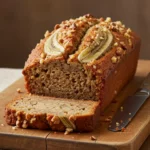There’s something utterly magical about a Lemon Meringue Pie. It’s the dessert that graced countless family gatherings in my childhood, the one my grandmother would make with such love and precision. I remember the anticipation as she’d pull it from the oven, the towering, golden-brown meringue peaks looking like edible clouds, promising a sweet, airy contrast to the vibrant, tangy lemon curd nestled beneath. The first bite was always an explosion of textures and tastes – the crisp, buttery crust yielding to the smooth, zesty lemon, all topped off with that sweet, melt-in-your-mouth meringue. My family would devour it, slices disappearing in happy silence, occasionally punctuated by sighs of contentment. Recreating it now brings back all those warm memories, and this particular recipe has become my go-to. It consistently delivers that perfect balance, and seeing my own loved ones enjoy it with the same gusto is a joy that never fades. It’s more than just a dessert; it’s a slice of sunshine, a comforting classic, and a guaranteed crowd-pleaser.
The Ultimate Lemon Meringue Pie: A Symphony of Tang and Sweetness
This recipe aims for perfection at every layer: a crisp, buttery crust that doesn’t go soggy, a intensely lemony and smooth curd that’s perfectly tart yet sweet, and a voluminous, stable meringue that browns beautifully without weeping. Get ready to create a dessert masterpiece that will wow your friends and family.
Ingredients for a Flawless Lemon Meringue Pie
For the Perfect Pie Crust (9-inch, deep-dish):
- 1 ½ cups (180g) all-purpose flour
- ½ teaspoon salt
- ½ cup (113g) unsalted butter, very cold and cubed
- ¼ cup (60ml) ice water, plus more if needed
For the Luscious Lemon Filling:
- 1 ½ cups (300g) granulated sugar
- ⅓ cup (40g) cornstarch
- ¼ teaspoon salt
- 1 ½ cups (360ml) water
- ½ cup (120ml) fresh lemon juice (from about 3-4 large lemons)
- 2 tablespoons lemon zest (from about 3-4 large lemons)
- 4 large egg yolks (save whites for meringue)
- 2 tablespoons unsalted butter, cut into small pieces
For the Cloud-Like Meringue:
- 4 large egg whites, at room temperature
- ½ teaspoon cream of tartar
- 1 cup (200g) granulated sugar (or superfine/caster sugar for quicker dissolving)
- 1 teaspoon vanilla extract
Step-by-Step Instructions: Crafting Your Lemon Meringue Masterpiece
Achieving lemon meringue pie perfection involves attention to detail in each component. Follow these steps carefully for a truly show-stopping dessert.
Part 1: Preparing the Perfect Pie Crust
A good Lemon Meringue Pie starts with a fantastic crust. We’re aiming for flaky, buttery, and sturdy enough to hold our luscious filling.
- Combine Dry Ingredients: In a large bowl, whisk together the 1 ½ cups of all-purpose flour and ½ teaspoon of salt.
- Cut in the Butter: Add the ½ cup of cold, cubed unsalted butter to the flour mixture. Using a pastry blender, your fingertips, or a food processor (pulsing briefly), cut the butter into the flour until the mixture resembles coarse crumbs with some pea-sized pieces of butter remaining. These larger butter pieces are key to a flaky crust.
- Add Ice Water: Gradually sprinkle ¼ cup of ice water over the mixture, one tablespoon at a time. Mix lightly with a fork after each addition, just until the dough starts to come together. Be careful not to overmix. The dough should not be sticky; if it’s too dry, add a tiny bit more ice water (a teaspoon at a time) until it just holds together when pressed.
- Chill the Dough: Form the dough into a flat disc, wrap it tightly in plastic wrap, and refrigerate for at least 1 hour (or up to 2 days). Chilling allows the gluten to relax and the fat to firm up, making it easier to roll and contributing to a tender crust.
- Roll Out the Dough: On a lightly floured surface, roll out the chilled dough into a 12-inch circle, about ⅛-inch thick. Work from the center outwards, rotating the dough occasionally to ensure even thickness.
- Transfer to Pie Dish: Carefully transfer the dough to a 9-inch deep-dish pie plate. Gently ease it into the bottom and up the sides, being careful not to stretch it. Trim the edges to leave about a ½-inch overhang. Fold the overhang under and crimp the edges decoratively using your fingers or a fork.
- Chill Again & Dock: Place the pie crust in the freezer for 30 minutes or refrigerate for 1 hour. This helps prevent shrinkage during baking. Once chilled, prick the bottom and sides of the crust all over with a fork (this is called docking). Docking allows steam to escape, preventing the crust from puffing up.
- Blind Bake the Crust: Preheat your oven to 375°F (190°C). Line the chilled pie crust with parchment paper or aluminum foil, ensuring it covers the bottom and sides. Fill with pie weights, dried beans, or uncooked rice. This weight prevents the crust from slumping or bubbling.
- First Bake: Bake for 15-20 minutes, or until the edges are just beginning to turn lightly golden.
- Second Bake (Uncovered): Carefully remove the parchment paper/foil and weights. Return the crust to the oven and bake for another 10-15 minutes, or until the bottom is dry and lightly golden brown. This step ensures a crisp bottom crust.
- Cool: Let the crust cool slightly on a wire rack while you prepare the filling. Keep the oven on, but reduce the temperature to 350°F (175°C) for the meringue later.
Part 2: Creating the Tangy Lemon Filling
The heart of the pie! This filling should be intensely lemony, smooth, and perfectly set.
- Combine Dry Ingredients: In a medium, heavy-bottomed saucepan, whisk together 1 ½ cups of granulated sugar, ⅓ cup of cornstarch, and ¼ teaspoon of salt. Whisking these dry ingredients together prevents the cornstarch from clumping when liquid is added.
- Add Liquids & Zest: Gradually whisk in 1 ½ cups of water, ½ cup of fresh lemon juice, and 2 tablespoons of lemon zest. Ensure there are no lumps.
- Cook the Filling: Place the saucepan over medium heat. Cook, whisking constantly, until the mixture comes to a boil and thickens considerably. This usually takes about 6-8 minutes. It’s crucial to stir constantly, especially the bottom, to prevent scorching and ensure even cooking. The mixture should be thick enough to coat the back of a spoon.
- Temper the Egg Yolks: In a separate small bowl, lightly whisk the 4 large egg yolks. To temper the yolks (prevent them from scrambling), slowly pour about ½ cup of the hot lemon mixture into the egg yolks, whisking constantly.
- Combine and Cook Further: Pour the tempered egg yolk mixture back into the saucepan with the remaining lemon mixture. Continue to cook over medium-low heat, whisking constantly, for another 2-3 minutes, until the filling is very thick and glossy. Do not let it boil vigorously at this stage.
- Add Butter: Remove the saucepan from the heat. Stir in the 2 tablespoons of butter pieces until melted and fully incorporated. The butter adds richness and a smooth mouthfeel.
- Pour into Crust: Immediately pour the hot lemon filling into the pre-baked pie crust, spreading it evenly. It’s important to add the meringue to a hot filling, as this helps it adhere and prevents a watery layer from forming between the filling and meringue.
Part 3: Whipping Up the Ethereal Meringue
A show-stopping meringue is tall, glossy, and stable. Room temperature egg whites and a clean bowl are your best friends here.
- Prepare Egg Whites: Ensure your mixing bowl and beaters are impeccably clean and free of any grease or fat, as even a trace can prevent the egg whites from whipping up properly. Place the 4 room temperature large egg whites and ½ teaspoon of cream of tartar into the clean bowl of a stand mixer fitted with the whisk attachment (or use a hand mixer). Cream of tartar helps stabilize the egg whites and allows them to reach their full volume.
- Whip to Soft Peaks: Beat the egg whites and cream of tartar on medium-low speed until foamy. Increase the speed to medium-high and continue beating until soft peaks form. Soft peaks will hold their shape somewhat but will droop over when the beater is lifted.
- Gradually Add Sugar: With the mixer still running on medium-high speed, very slowly and gradually add the 1 cup of granulated sugar, one tablespoon at a time. Allow about 15-20 seconds between each addition. This gradual addition ensures the sugar dissolves properly, which is key to a stable, non-weeping meringue.
- Whip to Stiff, Glossy Peaks: After all the sugar has been added, continue to beat on high speed until the meringue is thick, glossy, and holds stiff, sharp peaks. When you lift the beaters, the peaks should stand straight up or curl over slightly at the tip without collapsing. The meringue should not feel gritty when you rub a little between your fingers; if it does, continue beating until the sugar is fully dissolved.
- Add Vanilla: Beat in the 1 teaspoon of vanilla extract until just combined.
Part 4: Assembling and Baking Your Pie
The grand finale where all components come together.
- Spread Meringue: Immediately spoon the prepared meringue onto the hot lemon filling. Start by spreading meringue around the edges of the filling, ensuring it touches the crust all the way around. This creates a seal that helps prevent the meringue from shrinking away from the crust during baking and cooling.
- Create Swirls: Pile the remaining meringue into the center and spread it evenly over the filling, making sure it’s completely covered. Use the back of a spoon or a spatula to create decorative swirls and peaks. These peaks will brown nicely in the oven.
- Bake the Meringue: Bake in the preheated 350°F (175°C) oven for 12-18 minutes, or until the meringue is set and beautifully golden brown on the peaks. Keep a close eye on it, as meringue can brown quickly.
- Cool Completely: Remove the pie from the oven and let it cool completely on a wire rack for at least 2-3 hours at room temperature. Do NOT refrigerate it while it’s still warm, as this can cause condensation and make the meringue weep.
- Chill (Optional but Recommended): Once completely cooled to room temperature, you can loosely cover the pie with plastic wrap (try to tent it so it doesn’t touch the meringue) and chill it in the refrigerator for at least another 2-4 hours, or preferably overnight. Chilling helps the filling set up firmly, making it much easier to slice cleanly.
Nutrition Facts (Approximate)
- Servings: 8 slices
- Calories per serving: Approximately 400-450 calories (This can vary based on exact ingredient brands, pie dish size, and slice thickness.)
Preparation Time
- Crust Preparation & Chilling: 20 minutes active, 1 hour 30 minutes chilling/freezing
- Crust Baking: 30-35 minutes
- Filling Preparation: 20 minutes
- Meringue Preparation: 10-15 minutes
- Final Baking: 12-18 minutes
- Cooling & Chilling: 4-6 hours (minimum, overnight preferred for best slicing)
Total Active Time: Approximately 1 hour
Total Time (including chilling & baking): Approximately 7-9 hours (or longer if chilling overnight)
How to Serve Your Stunning Lemon Meringue Pie
Serving this classic dessert is an event in itself. Here’s how to make the most of it:
- Slice with Care:
- Use a long, thin, sharp knife.
- For the cleanest slices, dip the knife in hot water and wipe it clean between each cut. This prevents the meringue from dragging and the filling from smearing.
- Serve Chilled: Lemon Meringue Pie is best served chilled. The cold temperature enhances the refreshment of the lemon and helps the filling maintain its structure.
- Plate Presentation:
- Serve on individual dessert plates.
- A small dusting of powdered sugar around the edge of the plate can add an elegant touch.
- A single, fresh mint leaf or a thin lemon slice (perhaps candied) can be a simple yet beautiful garnish next to the slice.
- Accompaniments (Optional):
- While delicious on its own, a dollop of lightly sweetened whipped cream can complement the tartness for those who prefer extra creaminess.
- Fresh berries (raspberries, blueberries) on the side can add a lovely color contrast and another layer of fruity flavor.
- Perfect Occasions:
- Ideal for spring and summer gatherings.
- A fantastic dessert for Easter, Mother’s Day, or any celebration.
- A delightful finish to a Sunday dinner.
- Whenever you need a bright, uplifting treat!
Additional Tips for Lemon Meringue Pie Perfection
- Room Temperature Egg Whites for Meringue: Egg whites whip up to a greater volume when at room temperature. Take your eggs out of the fridge about 30 minutes before you plan to make the meringue.
- No Fat Near Meringue: Ensure your bowl, beaters, and any utensils that touch the egg whites are scrupulously clean and free of any grease or fat (including egg yolk). Even a tiny speck can prevent your meringue from reaching its full, billowy potential.
- Spread Meringue on HOT Filling: This is a crucial tip to prevent “weeping” (a layer of liquid forming between the filling and meringue). The heat from the filling helps to cook the bottom of the meringue, creating a better seal and bond.
- Seal Meringue to the Crust: When spreading the meringue, make sure it touches the pie crust all the way around. This creates a seal that helps prevent the meringue from shrinking away from the edges as it bakes and cools.
- Cool Gradually and Completely: Avoid drastic temperature changes. Let the pie cool completely at room temperature before even thinking about refrigerating it. Cooling too quickly can cause the meringue to weep or shrink. Patience is key for a stable, beautiful pie.
Frequently Asked Questions (FAQ) about Lemon Meringue Pie
Q1: Why is my meringue weeping or beading?
- A: Weeping (liquid seeping between meringue and filling) is often caused by undercooked meringue, spreading meringue on a cool filling, or humidity. Beading (small sugary droplets on the meringue surface) is usually a sign of overbaking the meringue or undissolved sugar. To prevent weeping, ensure the filling is hot when you top it, seal the meringue to the crust, and bake until just golden. For beading, ensure sugar is fully dissolved in the egg whites (it shouldn’t feel gritty) and don’t overbake. High humidity days are also notorious for causing meringue issues.
Q2: Why is my lemon filling runny?
- A: A runny filling usually means it wasn’t cooked long enough or didn’t reach a high enough temperature for the cornstarch to fully thicken it. Ensure the filling comes to a full boil and thickens considerably before tempering the eggs, and then cook it for a couple more minutes after adding the egg yolks back. Also, allow the pie to cool completely and then chill thoroughly; this helps the filling set up firmly.
Q3: Can I use bottled lemon juice instead of fresh?
- A: While you can, fresh lemon juice is highly recommended for the best, brightest, and most authentic lemon flavor. Bottled lemon juice can sometimes have a slightly muted or “off” taste. If you must use bottled, choose a high-quality one, but the zest from fresh lemons is still essential for that aromatic punch.
Q4: How do I store leftover Lemon Meringue Pie?
- A: Loosely cover leftover pie with plastic wrap (tenting it to avoid touching the meringue if possible) and store it in the refrigerator. It’s best enjoyed within 2-3 days. The meringue may soften and weep a bit over time, which is normal. Unfortunately, Lemon Meringue Pie does not freeze well; the meringue texture changes significantly upon thawing.
Q5: Can I make Lemon Meringue Pie ahead of time?
- A: You can make components ahead. The pie crust can be made and blind-baked a day in advance and stored, covered, at room temperature. The lemon filling can also be made a day ahead and stored in an airtight container in the refrigerator; gently reheat it before pouring into the crust and topping with meringue. However, the meringue should always be made and baked just before serving or within a few hours of serving for the best texture and appearance. The assembled pie is best made on the day it will be served, allowing ample time for cooling and chilling.
This Lemon Meringue Pie, with its perfect harmony of flaky crust, zesty curd, and airy meringue, is more than just a recipe – it’s an experience. Take your time, enjoy the process, and prepare for the oohs and aahs when you present this stunning, delicious classic. Happy baking!
Print
Lemon Meringue Pie Recipe
Ingredients
For the Perfect Pie Crust (9-inch, deep-dish):
- 1 ½ cups (180g) all-purpose flour
- ½ teaspoon salt
- ½ cup (113g) unsalted butter, very cold and cubed
- ¼ cup (60ml) ice water, plus more if needed
For the Luscious Lemon Filling:
- 1 ½ cups (300g) granulated sugar
- ⅓ cup (40g) cornstarch
- ¼ teaspoon salt
- 1 ½ cups (360ml) water
- ½ cup (120ml) fresh lemon juice (from about 3–4 large lemons)
- 2 tablespoons lemon zest (from about 3–4 large lemons)
- 4 large egg yolks (save whites for meringue)
- 2 tablespoons unsalted butter, cut into small pieces
For the Cloud-Like Meringue:
- 4 large egg whites, at room temperature
- ½ teaspoon cream of tartar
- 1 cup (200g) granulated sugar (or superfine/caster sugar for quicker dissolving)
- 1 teaspoon vanilla extract
Instructions
Part 1: Preparing the Perfect Pie Crust
A good Lemon Meringue Pie starts with a fantastic crust. We’re aiming for flaky, buttery, and sturdy enough to hold our luscious filling.
- Combine Dry Ingredients: In a large bowl, whisk together the 1 ½ cups of all-purpose flour and ½ teaspoon of salt.
- Cut in the Butter: Add the ½ cup of cold, cubed unsalted butter to the flour mixture. Using a pastry blender, your fingertips, or a food processor (pulsing briefly), cut the butter into the flour until the mixture resembles coarse crumbs with some pea-sized pieces of butter remaining. These larger butter pieces are key to a flaky crust.
- Add Ice Water: Gradually sprinkle ¼ cup of ice water over the mixture, one tablespoon at a time. Mix lightly with a fork after each addition, just until the dough starts to come together. Be careful not to overmix. The dough should not be sticky; if it’s too dry, add a tiny bit more ice water (a teaspoon at a time) until it just holds together when pressed.
- Chill the Dough: Form the dough into a flat disc, wrap it tightly in plastic wrap, and refrigerate for at least 1 hour (or up to 2 days). Chilling allows the gluten to relax and the fat to firm up, making it easier to roll and contributing to a tender crust.
- Roll Out the Dough: On a lightly floured surface, roll out the chilled dough into a 12-inch circle, about ⅛-inch thick. Work from the center outwards, rotating the dough occasionally to ensure even thickness.
- Transfer to Pie Dish: Carefully transfer the dough to a 9-inch deep-dish pie plate. Gently ease it into the bottom and up the sides, being careful not to stretch it. Trim the edges to leave about a ½-inch overhang. Fold the overhang under and crimp the edges decoratively using your fingers or a fork.
- Chill Again & Dock: Place the pie crust in the freezer for 30 minutes or refrigerate for 1 hour. This helps prevent shrinkage during baking. Once chilled, prick the bottom and sides of the crust all over with a fork (this is called docking). Docking allows steam to escape, preventing the crust from puffing up.
- Blind Bake the Crust: Preheat your oven to 375°F (190°C). Line the chilled pie crust with parchment paper or aluminum foil, ensuring it covers the bottom and sides. Fill with pie weights, dried beans, or uncooked rice. This weight prevents the crust from slumping or bubbling.
- First Bake: Bake for 15-20 minutes, or until the edges are just beginning to turn lightly golden.
- Second Bake (Uncovered): Carefully remove the parchment paper/foil and weights. Return the crust to the oven and bake for another 10-15 minutes, or until the bottom is dry and lightly golden brown. This step ensures a crisp bottom crust.
- Cool: Let the crust cool slightly on a wire rack while you prepare the filling. Keep the oven on, but reduce the temperature to 350°F (175°C) for the meringue later.
Part 2: Creating the Tangy Lemon Filling
The heart of the pie! This filling should be intensely lemony, smooth, and perfectly set.
- Combine Dry Ingredients: In a medium, heavy-bottomed saucepan, whisk together 1 ½ cups of granulated sugar, ⅓ cup of cornstarch, and ¼ teaspoon of salt. Whisking these dry ingredients together prevents the cornstarch from clumping when liquid is added.
- Add Liquids & Zest: Gradually whisk in 1 ½ cups of water, ½ cup of fresh lemon juice, and 2 tablespoons of lemon zest. Ensure there are no lumps.
- Cook the Filling: Place the saucepan over medium heat. Cook, whisking constantly, until the mixture comes to a boil and thickens considerably. This usually takes about 6-8 minutes. It’s crucial to stir constantly, especially the bottom, to prevent scorching and ensure even cooking. The mixture should be thick enough to coat the back of a spoon.
- Temper the Egg Yolks: In a separate small bowl, lightly whisk the 4 large egg yolks. To temper the yolks (prevent them from scrambling), slowly pour about ½ cup of the hot lemon mixture into the egg yolks, whisking constantly.
- Combine and Cook Further: Pour the tempered egg yolk mixture back into the saucepan with the remaining lemon mixture. Continue to cook over medium-low heat, whisking constantly, for another 2-3 minutes, until the filling is very thick and glossy. Do not let it boil vigorously at this stage.
- Add Butter: Remove the saucepan from the heat. Stir in the 2 tablespoons of butter pieces until melted and fully incorporated. The butter adds richness and a smooth mouthfeel.
- Pour into Crust: Immediately pour the hot lemon filling into the pre-baked pie crust, spreading it evenly. It’s important to add the meringue to a hot filling, as this helps it adhere and prevents a watery layer from forming between the filling and meringue.
Part 3: Whipping Up the Ethereal Meringue
A show-stopping meringue is tall, glossy, and stable. Room temperature egg whites and a clean bowl are your best friends here.
- Prepare Egg Whites: Ensure your mixing bowl and beaters are impeccably clean and free of any grease or fat, as even a trace can prevent the egg whites from whipping up properly. Place the 4 room temperature large egg whites and ½ teaspoon of cream of tartar into the clean bowl of a stand mixer fitted with the whisk attachment (or use a hand mixer). Cream of tartar helps stabilize the egg whites and allows them to reach their full volume.
- Whip to Soft Peaks: Beat the egg whites and cream of tartar on medium-low speed until foamy. Increase the speed to medium-high and continue beating until soft peaks form. Soft peaks will hold their shape somewhat but will droop over when the beater is lifted.
- Gradually Add Sugar: With the mixer still running on medium-high speed, very slowly and gradually add the 1 cup of granulated sugar, one tablespoon at a time. Allow about 15-20 seconds between each addition. This gradual addition ensures the sugar dissolves properly, which is key to a stable, non-weeping meringue.
- Whip to Stiff, Glossy Peaks: After all the sugar has been added, continue to beat on high speed until the meringue is thick, glossy, and holds stiff, sharp peaks. When you lift the beaters, the peaks should stand straight up or curl over slightly at the tip without collapsing. The meringue should not feel gritty when you rub a little between your fingers; if it does, continue beating until the sugar is fully dissolved.
- Add Vanilla: Beat in the 1 teaspoon of vanilla extract until just combined.
Part 4: Assembling and Baking Your Pie
The grand finale where all components come together.
- Spread Meringue: Immediately spoon the prepared meringue onto the hot lemon filling. Start by spreading meringue around the edges of the filling, ensuring it touches the crust all the way around. This creates a seal that helps prevent the meringue from shrinking away from the crust during baking and cooling.
- Create Swirls: Pile the remaining meringue into the center and spread it evenly over the filling, making sure it’s completely covered. Use the back of a spoon or a spatula to create decorative swirls and peaks. These peaks will brown nicely in the oven.
- Bake the Meringue: Bake in the preheated 350°F (175°C) oven for 12-18 minutes, or until the meringue is set and beautifully golden brown on the peaks. Keep a close eye on it, as meringue can brown quickly.
- Cool Completely: Remove the pie from the oven and let it cool completely on a wire rack for at least 2-3 hours at room temperature. Do NOT refrigerate it while it’s still warm, as this can cause condensation and make the meringue weep.
- Chill (Optional but Recommended): Once completely cooled to room temperature, you can loosely cover the pie with plastic wrap (try to tent it so it doesn’t touch the meringue) and chill it in the refrigerator for at least another 2-4 hours, or preferably overnight. Chilling helps the filling set up firmly, making it much easier to slice cleanly.
Nutrition
- Serving Size: One Normal Portion
- Calories: 400-450





